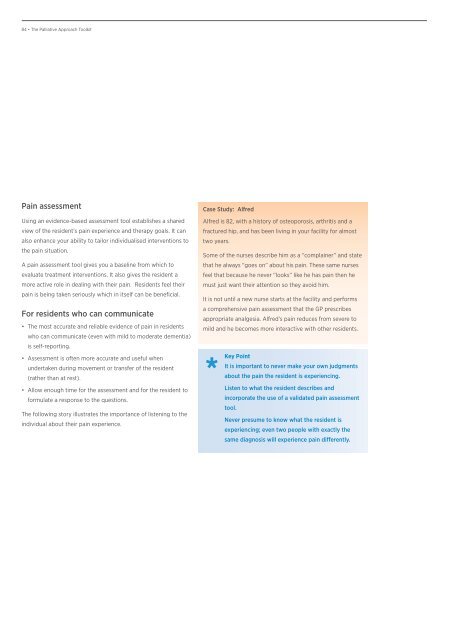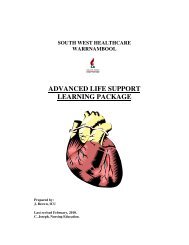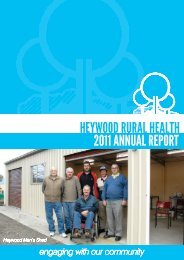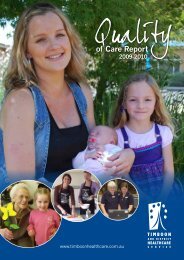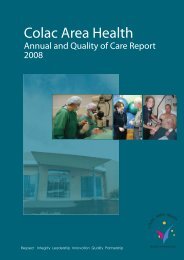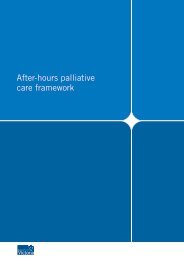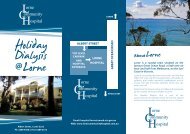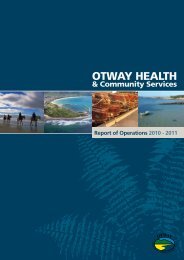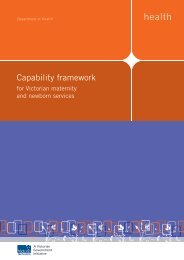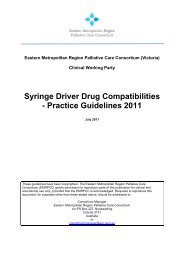Self Directed Learning Package - University of Queensland
Self Directed Learning Package - University of Queensland
Self Directed Learning Package - University of Queensland
- No tags were found...
You also want an ePaper? Increase the reach of your titles
YUMPU automatically turns print PDFs into web optimized ePapers that Google loves.
84 • The Palliative Approach ToolkitPain assessmentUsing an evidence-based assessment tool establishes a sharedview <strong>of</strong> the resident’s pain experience and therapy goals. It canalso enhance your ability to tailor individualised interventions tothe pain situation.A pain assessment tool gives you a baseline from which toevaluate treatment interventions. It also gives the resident amore active role in dealing with their pain. Residents feel theirpain is being taken seriously which in itself can be beneficial.For residents who can communicate• The most accurate and reliable evidence <strong>of</strong> pain in residentswho can communicate (even with mild to moderate dementia)is self-reporting.• Assessment is <strong>of</strong>ten more accurate and useful whenundertaken during movement or transfer <strong>of</strong> the resident(rather than at rest).• Allow enough time for the assessment and for the resident t<strong>of</strong>ormulate a response to the questions.The following story illustrates the importance <strong>of</strong> listening to theindividual about their pain experience.Case Study: AlfredAlfred is 82, with a history <strong>of</strong> osteoporosis, arthritis and afractured hip, and has been living in your facility for almosttwo years.Some <strong>of</strong> the nurses describe him as a “complainer” and statethat he always “goes on” about his pain. These same nursesfeel that because he never “looks” like he has pain then hemust just want their attention so they avoid him.It is not until a new nurse starts at the facility and performsa comprehensive pain assessment that the GP prescribesappropriate analgesia. Alfred’s pain reduces from severe tomild and he becomes more interactive with other residents.Key PointIt is important to never make your own judgmentsabout the pain the resident is experiencing.Listen to what the resident describes andincorporate the use <strong>of</strong> a validated pain assessmenttool.Never presume to know what the resident isexperiencing; even two people with exactly thesame diagnosis will experience pain differently.


